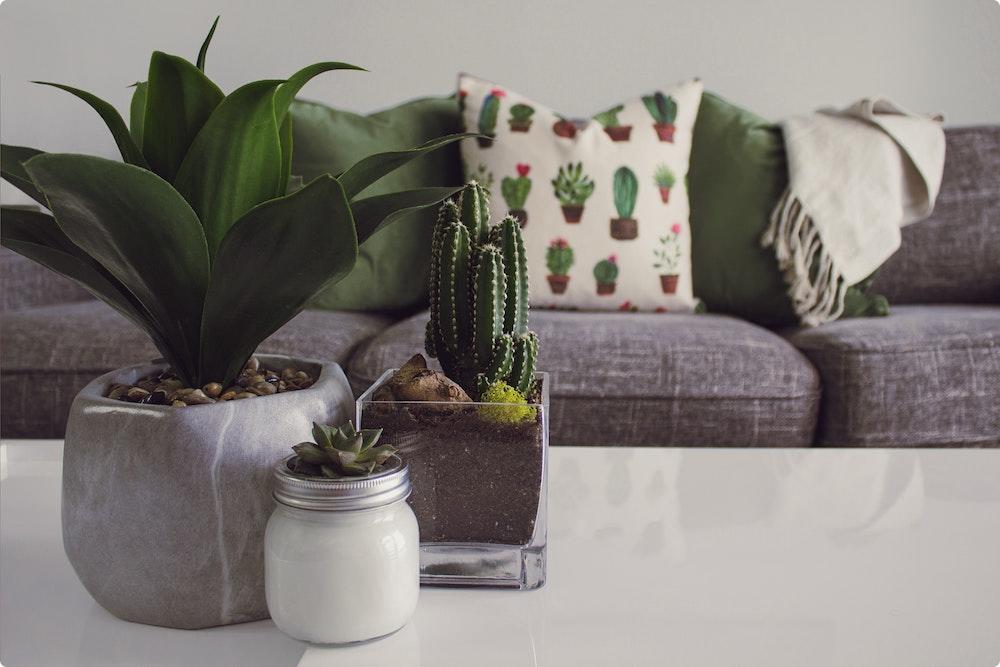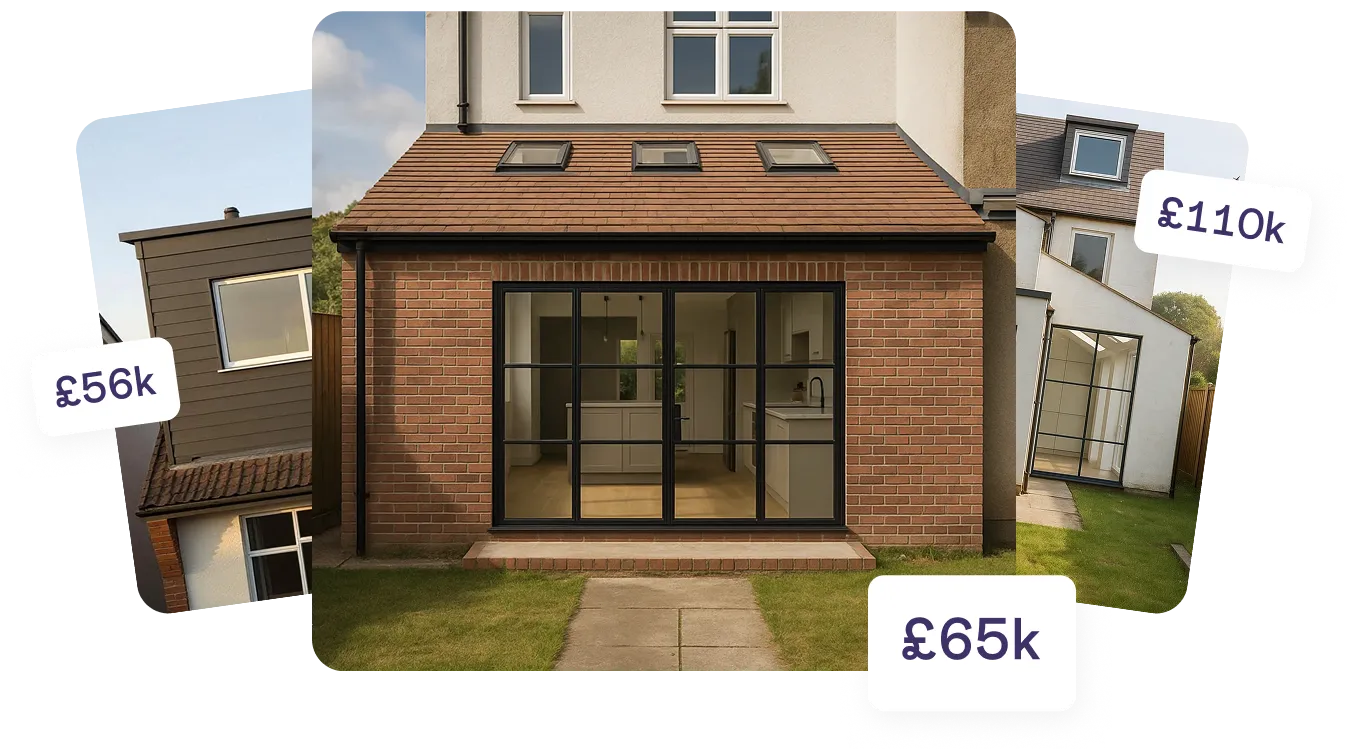The power to personalise
Of those who are very satisfied with their homes, 90% were satisfied with their ability to personalise their space with objects and possessions, versus 32% who were not. It’s important to address that for many people, especially those who rent, the ability to personalise their space is often denied to them. Walls must be kept blank. Shelves to display personal items are limited, if they exist at all.
However, many people support a change in these unfair renting conditions. 67% of the public agree that renters should have greater rights when it comes to personalising their space - so could the tides be turning?
We asked our designers what we can do now to get our homes feeling more like ourselves.
Your taste can find a way…
If renting a property, make sure you get a clear understanding from your landlord upfront about changes you can make. Remember, they want someone living there, so don’t be afraid to flex your bargaining powers. Could you paint areas and then repaint them before the tenancy ends? Can pictures be hung and the holes filled in after the fact? What about the furniture? When new to living away from your parents, you’ll likely opt for a furnished household. However, it’s worthwhile trying to move towards unfurnished - a sofa, wardrobe, or bed can make a big difference to the look and feel of a home!
If your landlord isn’t generous, consider freestanding shelving units as a way to display decorative items. You can also choose adhesive picture hooks, instead of nails in the wall, to add art / photos to your home.
And if you want to bring together other happy home qualities, such as creating a connection to the outside, house plants can bring these two elements together. There are now plenty of options available so that even those without green thumbs can add a splash of colour to their home - plus, you can always opt for fake plants, we won’t judge.
Don’t be taken in by trends
While the latest home trends can be helpful for inspiration, it’s important that we don’t rely on them solely to shape the design of a household.
Remember: we don’t want to fall into the trap of endless consumption, whereby we buy things because of what they might say about us rather than because they really represent our intrinsic selves.

Finding your personal taste…
When it comes to decorating your home, remember it’s okay to take your time. While we might need to rush out to purchase the essentials, such as a bed, sofa, somewhere to store our clothes, the rest of our possessions should be allowed time to accumulate. Pick items personal to you, mementos of good times, or just simply things you truly love. Going slower will also mean you can save up for bigger, longer-lasting items.
Whether you’re an owner or a renter, get creative with features at home. For example, a mantlepiece can be personally customised, providing space for objects, as well as giving symmetry to a space. Where you don’t have any distinctive features, consider installing a new feature that encourages interaction, like an expandable table which could accommodate smaller or larger groups.
If you do find yourself feeling the pull of the trends, consider what it is you like about them. Are there particular colours which pull you in? Are the spaces you like busy or calm? Perhaps you prefer maximalism over minimalism. Rather than defining the look of your home, trends should be helping you define your own unique taste, even as it changes over the years.
‘You’ focused design
It might sound obvious to put yourself first in your home but you would be surprised! Our research discovered a pattern of thought whereby those we interviewed were designing their home around what they thought a future buyer might like. In some cases, homeowners were prioritising a future owner of their house even when they had no intention of selling!
Yes, your home is an asset and you want to protect your investment, but it is primarily a place for you to live day to day. When we design our home for other people we essentially put their happiness above our own. A pointless endeavour, anyway, for as our research reveals, only you can make a house a home - so why waste money guessing what someone else will like?
Putting yourself at the centre of home design…
Don’t think that reflecting is confined to just your interior design. Your house as a whole should show who you and your family are. This means creating layouts that work uniquely for your day to day lives. In this sense, personalising your design will also work with making it adaptable. As we grow our needs change and your home should be able to keep up with these changes.
Window choices and placement can maximise light exposure and create connections to the outside. For example, skylights can bring in almost double the level of daylight as vertical windows, filling spaces with light which may not ordinarily fit normal windows. They can be used stylistically to light up keyspaces. Unusual shapes, grid patterns and colour panels can also give a space personality and distinctiveness.
The best thing a new homeowner can do before settling in is to get an architect on board. Having these experts in space in your corner from the start will allow you to get their advice on customising the design of your home. Cook a lot? Then make the kitchen both a place of function and socialisation. Have young kids? Give them their own space to call their own, one that grows alongside them. An architect will be able to create layout changes that work with the unique aspects of your lifestyle.
Summary
Having a home that reflects your personality and values is somewhere you can cherish and feel proud to put your feet up.
Therefore, all residents of the UK should have the freedom and empowerment to shape their home around their tastes. Whether a homeowner or someone who rents, happiness in the home relies on us being able to put our own personal stamp on the spaces we inhabit.
This means some changes to the way we think of our homes. Landlords will need to appreciate that tenants need the ability to personalise a home in order to be happy there. Meanwhile, homeowners will have to start prioritising their needs over those of an imagined future buyer, as well as learning to look past the hype of interior design trends. And with these small shifts in perception, give ourselves the freedom to create happy homes.
For help unlocking your home’s potential, consider a free consultation with our team. During these calls, we can not only offer design ideas but a realistic guide to what any potential projects will entail. Book yours here.






